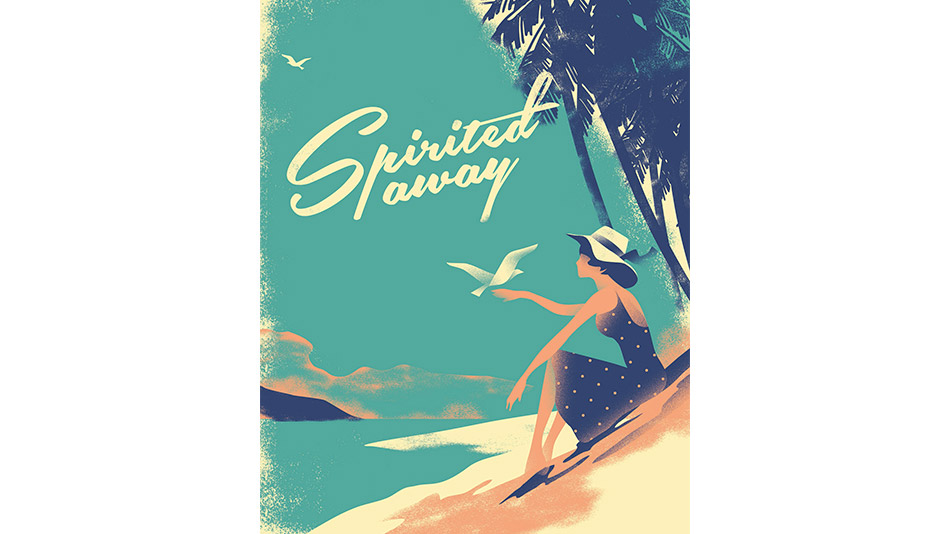Out of This World: David Mitchell on the Great Escape of Novels
If reading itself is an adventure, then a novel set in an alternate reality is the ultimate getaway, observes author David Mitchell.

Illustration by Mads Berg
Traveling to a foreign country is one thing; escaping to the future, or to a different planet, is another; but surely the farthest shore is an alternate reality where your life—or world history, or the evolution of Homo sapiens—has followed a different route of cause and effect from the one you know...or thought you knew. Readers and writers have long reveled in the possibilities offered by parallel universes. My first visit came via the 1983 novel A Rebel in Time, by Harry Harrison, in which a racist U.S. colonel returns to the late 1850s to manufacture submachine guns for the Confederacy, thereby "prebooting" our reality into one where the South wins the Civil War. My latest journey into a parallel universe was courtesy of Kate Atkinson's glorious Life After Life, which tells the stories of Ursula Todd, born February 11, 1910. After each of her deaths, from strangulation by umbilical cord onward, she is reborn in her birth year but in an alternate reality and with a divergent, longer life—and death—ahead of her. Claire North's The First Fifteen Lives of Harry August treads similar ground, with its protagonist coming back to life on the same date each time he dies, always retaining perfect recall of his former lives. Like Bill Murray's character in Groundhog Day ,sooner or later these people have to face the big questions, which the reader chews along with them.
Why are we drawn to the what-if novel? One attraction is the febrile trippiness of rendering the nonexistent existent and the unthinkable thinkable. In The Man in the High Castle, Philip K. Dick imagines the Axis powers winning the Second World War. The unsettling vision of a U.S. under Japanese and German occupation is both compelling and strange, and takes a still more hallucinogenic turn courtesy of a character working on a novel in which the Allies win. And then there is satire. In Mark Twain's A Connecticut Yankee in King Arthur's Court, a 19th-century engineer wakes up near Camelot and sets about diverting world history into an alternate reality by seeding an industrial revolution in a feudal state. Some of the jokes are at the expense of the chivalric romance—Merlin is a sham, and the knights can barely stand up in their rusty armor.
Parallel universes may be associated with the badlands of genre fiction, but writers of unimpeachable literary credentials have deployed them. Vladimir Nabokov's Ada, or Ardor is set in the fictional Antiterra, whose geographic map resembles our own, but not its political map: The U.S. includes South America, and "Russia" is a province of rival superpower Tartary. Michael Chabon's The Yiddish Policemen's Union is a cerebral, droll, and provocative novel in which Israel is throttled in its Palestinian incubator and relocated to a miserable sliver of Alaska.
The unconverted may view what-if novels as trifling distractions from the grown-up business of real life, but I disagree. During a discussion about East Asian science fiction at the Shanghai Book Fair three years ago, I was told that the Chinese Communist Party's censors look upon this sort of fiction with suspicion and disapproval. The censors' logic is no mystery: Parallel universes imply that history is more fluid, random, and improvised than it is fixed, planned, and inevitable; that there are no semidivine laws governing who comes out on top. Clearly, this is not good news for a one-party state, but what finer endorsement of the genre could there possibly be?



